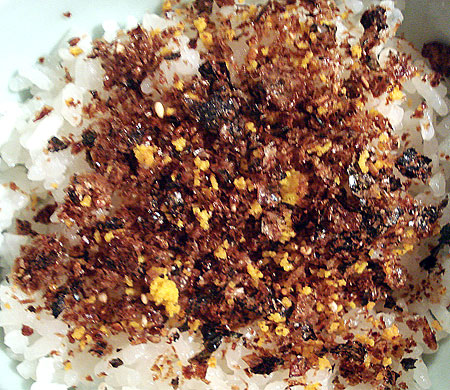
Noritama is one of the most popular flavors of furikake available commercially. Nori means the seaweed that's used as a sushi roll or onigiri wrapper, and tama is short for tamago, or egg. The base, which gives the most flavor to the furikake, is bonito flakes or katsuobushi.
Surprisingly perhaps, noritama is one of the more fiddly furikake to make at home, though it's by no means difficult. But I like to make it occasionally anyway becase I find commercial noritama to be a bit too salty. This version is lower on salt, so you can pile it on your rice if you want to. Naturally it's free of any preservatives, MSG, or what have you. It's also a lot cheaper than the commercial versions, even if you have to pay premium prices for the bonito flakes and nori as I do.